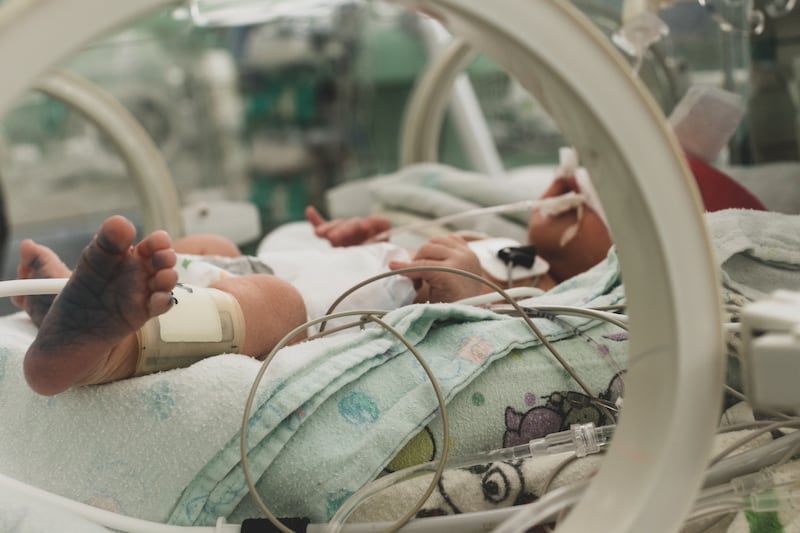Preterm births are the leading killer of children under 5, according to the World Health Organization. And when preemies survive, some of them have lifelong health challenges.
Babies born preterm are routinely placed in incubators. But what if they could be placed in an artificial womb — some kind of device that mimics conditions inside a uterus that would allow them to further develop?
That has been the topic of a gathering of advisers to the U.S. Food and Drug Administration, who met this week to talk about the safety and effectiveness of artificial womb technology, “including regulatory and ethical considerations for first-in-human studies.” They were looking solely at use of artificial womb technologies to replace existing care protocols for extremely premature infants requiring neonatal intensive care.
During a two-day conference to discuss the future of artificial wombs, including possible importance but also challenges and pitfalls, FDA advisers on the Pediatric Advisory Committee noted some ethical considerations and talked about the data that would be needed to win approval of an artificial womb device.
The questions being considered are huge, including: How do you make human trials appropriate? How do you overcome ethical issues? And what are the measures of a successful clinical study?
Extremely premature
As CNN reported, “An artificial womb is not designed to replace a pregnant person; it could not be used from conception until birth. Rather, it could be used to help a small number of infants born before 28 weeks of pregnancy, which is considered extreme prematurity. Less than 1% of babies are born this early.”
The U.S. Centers for Disease Control and Prevention says that 1 in 10 babies are born before 37 weeks, which makes them premature. The risk of complications and even death rises the earlier the infant is born and 16% of infant deaths are among premature babies.
The brain and lungs are among the last organs to develop in pregnancy, so when a baby is born before those are completely formed, health problems can be lifelong, from gut and intestinal tract issues to developmental delays and cerebral palsy. A very premature child can also have trouble breathing, and hearing and vision may not develop correctly, either.
It’s estimated that fewer than a third of infants born at 22 weeks survive, while fewer than 6 in 10 survive at 23 weeks, experts say. But each extra week in a womb makes a difference in the child’s outcome, with risks decreasing the closer the infant gets to full-term birth.
“The artificial womb could be able to help the baby develop further through those vital final stages when the lung and brain are developing. Like a person’s womb, it would deliver oxygen, nutrients and hormones,” CNN reported.
The artificial womb
There have been no tests of artificial wombs for humans, though some animal testing has been done.
Early technological advances have been made in animal studies. A developing lamb was kept alive for four weeks in 2017 by Children’s Hospital of Philadelphia researchers, who filled a sterile bag with amniotic fluid, then delivered medicine and oxygen through tubes to the lamb’s umbilical cord. During that time, the lamb’s organs continued to develop.
The committee was told that more than 300 lambs have since been placed in the artificial womb with positive results. “We’ve observed no acute irreversible events that threaten survival,” Dr. Alan Flake, who directs the hospital’s Center for Fetal Research, told the panel on Tuesday. He reminded them that the lamb could be removed from the womb and provided standard care, should the need arise, just as an infant could be placed in an incubator.
As Nature reported, “Several groups are developing artificial-womb technology to improve outcomes for extremely premature babies, but they take different approaches. Using fetal lambs as a model, a group at the University of Michigan in Ann Arbor fills the lungs with fluid to protect them as they develop.”
The article notes pros and cons to both approaches.
And it’s an international quest, as well, per Nature: “Eduard Gratacós, a fetal-medicine specialist at the University of Barcelona in Spain who is also developing an artificial womb, acknowledges that his group is years behind the CHOP group. But if clinical-trial results look promising, he says, ‘we’re going to need several of these systems in the world.’”
Others working on womb technology are using different animals, such as pigs.
What about human testing?
Testing for a human device would be much trickier, starting with which animal would first be used and going on through the ethical issues, including how you’d ask parents to let you test the device on their child.
Any approval of an artificial womb will hinge on whether the FDA decides to allow it to move forward, as well as overcoming hurdles to prove its safety and efficacy. So it will be years into the future — if it happens.
To even approve experimenting with humans, early clinical trials would need to show that animals placed in an artificial womb continued to grow and develop normally. Researchers would also have to show that the animals’ rate of health problems and deaths decline. That might include a comparison to what happens in the standard of care, which takes place in existing practices in neonatal intensive care.


